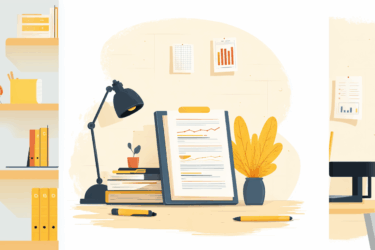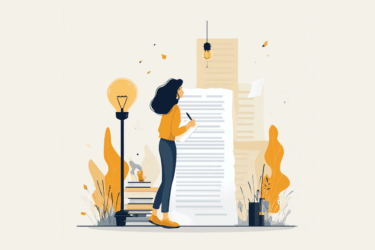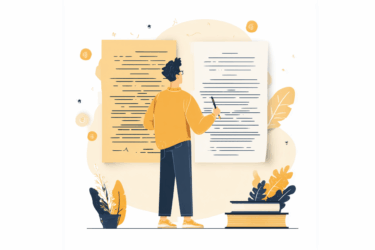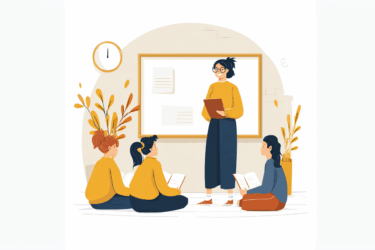Originality is one of the key characteristics of any content piece. You may like it or not, agree or argue, but the actual conversation starts only when you ensure the idea is unique – therefore, worth discussing. It appeals to any type of writing, from articles and bestseller books to student essays.
Plagiarism-checking tool comes in handy when you need to analyze text originality. It ensures the writing is unique, protects academic integrity, and helps students, teachers, and content creators stay on the safe side. Moreover, it is easy to use! Check our step-by-step plagiarism detection guide to forget about plagiarism-related issues.
- How to use plagiarism checker
- Plagiarism checker for students
- Plagiarism checker for teachers
- How to interpret the plagiarism checker results
How to use plagiarism checker
1. Open the New Check menu on PlagiarismCheck.org. There you will see several options.
- Drag and drop your files – the tool supports DOC, DOCX, TXT, PDF, ODT, and RTF formats.
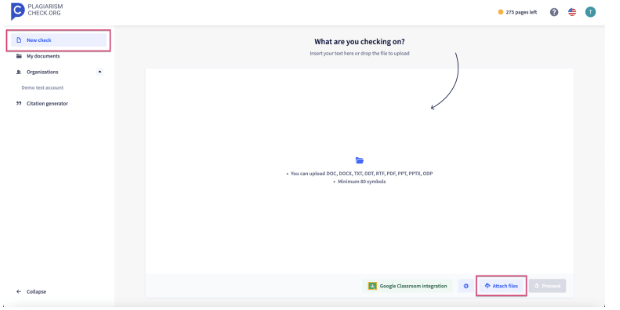
- Attach as many documents as you need – we will create a separate plagiarism report for each.
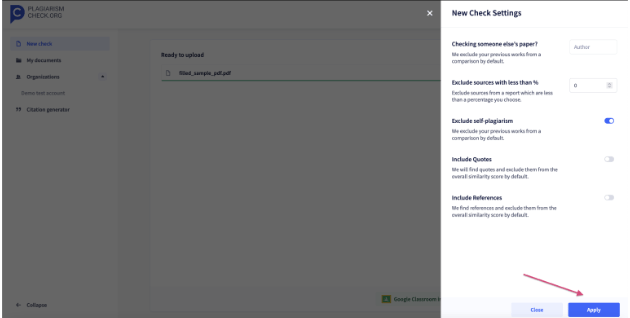
- You can type or copy and paste your text in the New Check window – as simple as it sounds!
2. Confirm the files you want to check and press “Proceed”.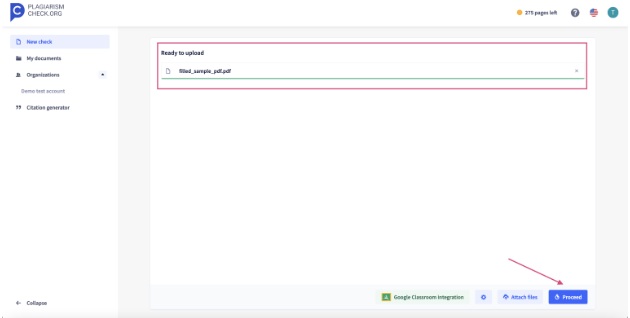
3. Press “Continue” to approve the check.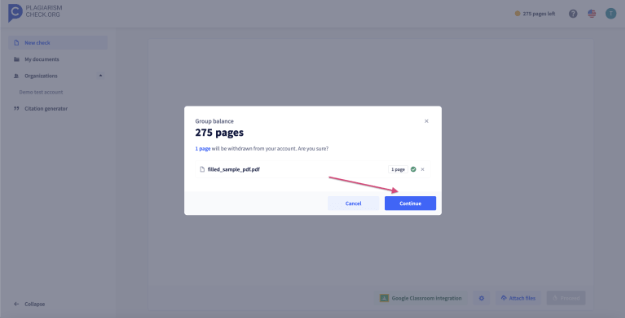
You can check the text in many languages — our algorithms will find similarities and show you accurate results.
Plagiarism checking guide for students
Unintended plagiarism is still plagiarism with all the consequences it entails. Even if you have no intention to cheat, there is always a risk of accidentally repeating someone else’s ideas – or even your own! In some cases, reusing your previous text may also be considered plagiarism, which can influence your grades or make the professor question the originality of your work.
Checking the paper for plagiarism before submitting the assignment is a good idea, as it’s always better to be safe than sorry. Here is a comprehensive guide on how to use plagiarism checker.
- Follow the instructions above to scan your text. You can find all the results in “My documents”.
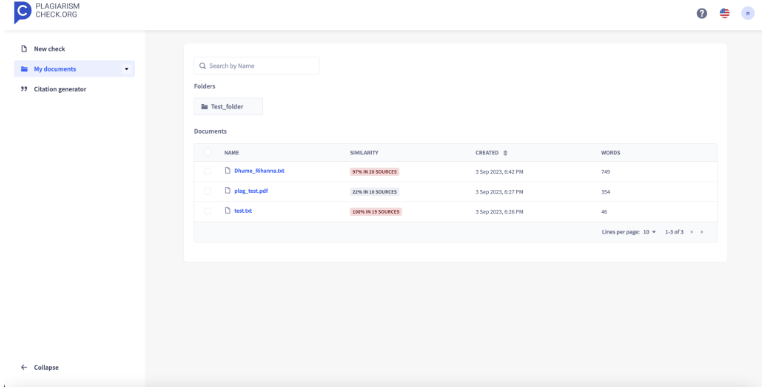
- As a member of an institution’s account, you can directly submit a report to your teacher, adding it to a folder a teacher has shared with you. Or you can always simply send a report by email.
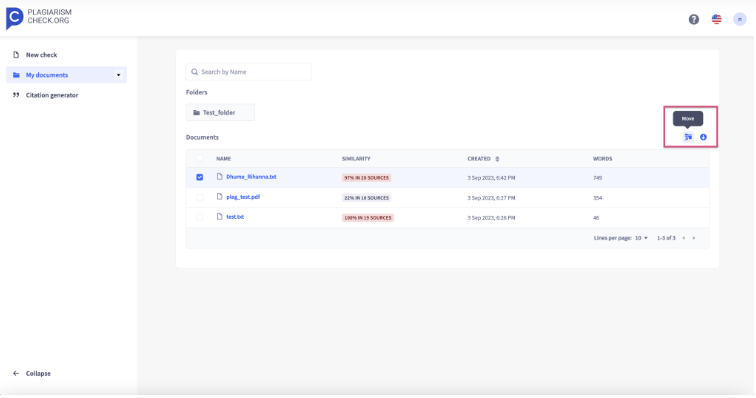
- You may submit a report to a folder only once. A submitted report cannot be removed, so make sure you add the correct one.

- You can generate citations according to the chosen style.
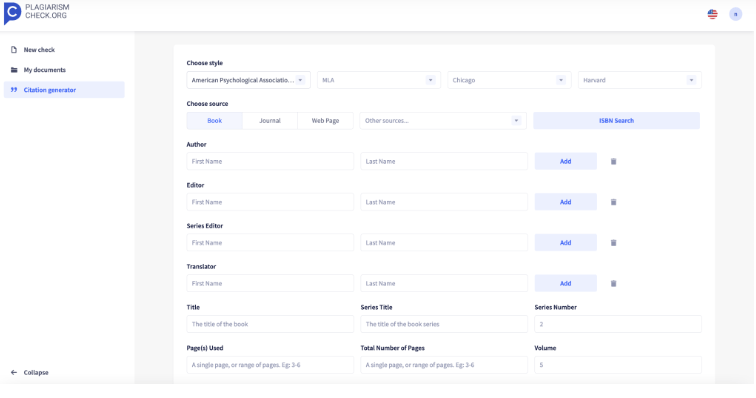
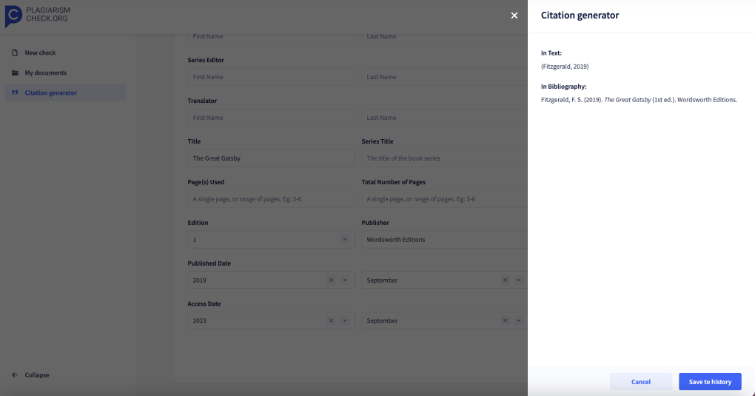
How to use Plagcheck for teachers
Check your student’s file following the step-by-step plagiarism detection guide above. You can process several documents simultaneously! Moreover, PlagiarismCheck.org provides you with the following features.
- View the list of students’ papers in My Documents, search and navigate through them easily.
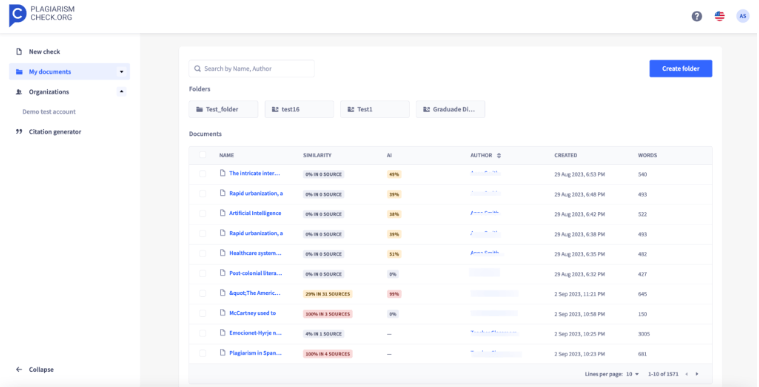
- Create folders and sub-folders to manage and group your similarity reports by assignments and courses.
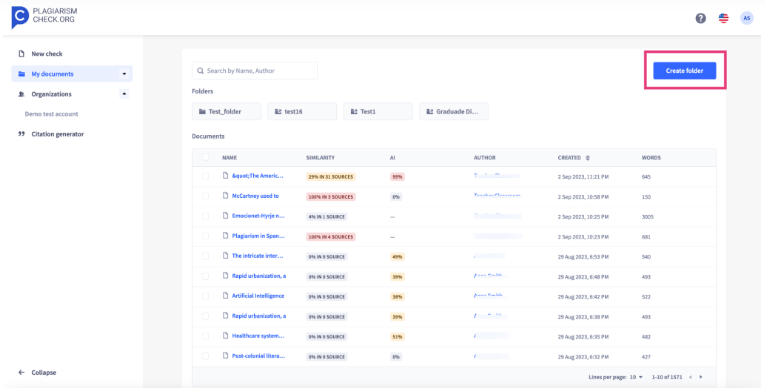
- Share folders with students to get and review their similarity reports in one place.

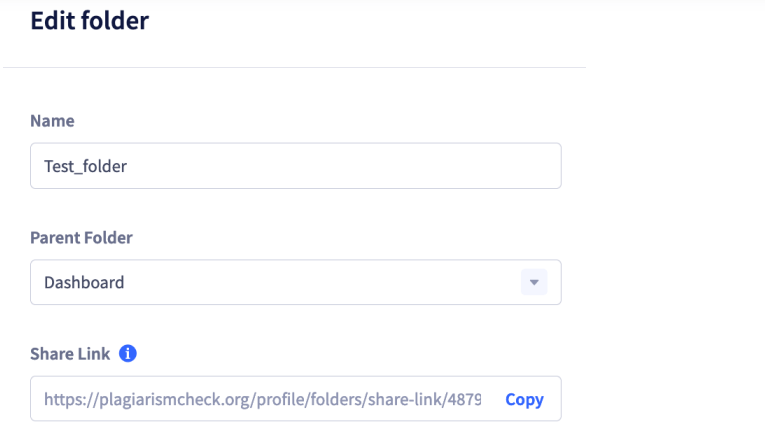
- If you use an LMS, click on a similarity and AI percentage to open a comprehensive report.
- Analyze the reports, check the similarity sources, and manage the sources to exclude them if they shouldn’t be considered plagiarism.
- Select any word or sentence on a report and leave feedback to a student.
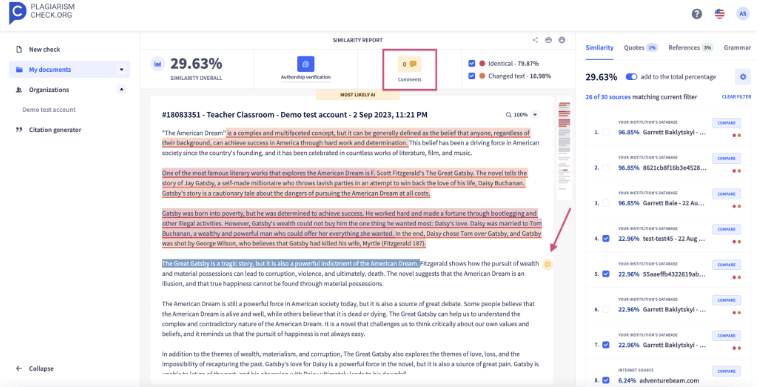
- Share or download a report as a PDF.
How to use plagiarism checker to empower your work
PlagiarismCheck.org highlights similarities found in the text. It is always up to you to decide whether the detected part is plagiarized.
Read more about how the PlagiarismCheck.org algorithm works.
How to interpret the plagiarism checker results:
- Look at the report and estimate the types of alleged plagiarism detected by the program. The percentage marks how much text from this paper was found in a source.
- Follow the direct links to the resources with matching content.
- Similarities found in quotes, references, and the body of the paper are presented in different sections. You can either include or exclude any of the types, impacting the final score. By default, the percentage of plagiarism contains only similarities found in the body of the paper and excludes quotes and references.
- You can also distinguish between the sources. Our algorithm detects similarities in your institution’s database, Internet sources, and external databases. Moreover, it helps to avoid self-plagiarism by comparing the text with your older works
- Download the report in PDF format or share it via e-mail.
How does plagiarism checker work?
A plagiarism detector uses sophisticated algorithms to compare the text submitted for the check with all the content from its database. The tool takes separate keywords, analyzes phrase structure, and compares whole extracts to find similarities. Then, it shows the matches found and calculates the percentage of potential plagiarism detected in the text based on the number and character of the similarities.
Along with the similarity score, PlagiarismCheck.org provides a detailed report that allows one to analyze the sources where the matches have been found.
What does a plagiarism detector compare the text to?
Each tool has its own database. Depending on the checker, it may contain more or less a wide range of materials, sometimes including specific data not available for free.
PlagiarismCheck.org compares texts against all the content published on the Internet, including no longer available pages. The database also contains specific resources, some of which can’t be openly accessed online unless you buy them. Moreover, the repository is customized, which means one can upload their own texts for comparison. This feature is especially useful for instructors who add students’ text to prevent copying from each other or submitting old works.
What exactly does the plagiarism checker compare?
So, a plagiarism checker compares the text to all the available data and shows the uncovered similarities. The comparison algorithms are constantly evolving, and databases are growing, allowing one to detect matches even with freshly released content. Moreover, plagiarism checker tools are able to catch even the intricate attempts of copying or unintentional plagiarism.
For instance, the PlagiarismCheck.org detector analyzes the writing for exact matches, cases of replacing the words with synonyms, word order or sentence structure rearrangement, and changing the voice from active to passive and vice versa. Due to this comprehensive approach, the detector uncovers not only verbatim but also complicated cases of copying.
Luckily, you don’t have to get into the process particulars to get fast and efficient results. With PlagiarismCheck.org, the detection takes three easy steps: copy the text or drag the file, press check, and get the result with a downloadable report!
Remember, we are here to help you! PlagiarismCheck.org boasts a 24/7 customer support line. Contact us to find your way to implement AI checker GPT and make originality scanning smooth and efficient.


